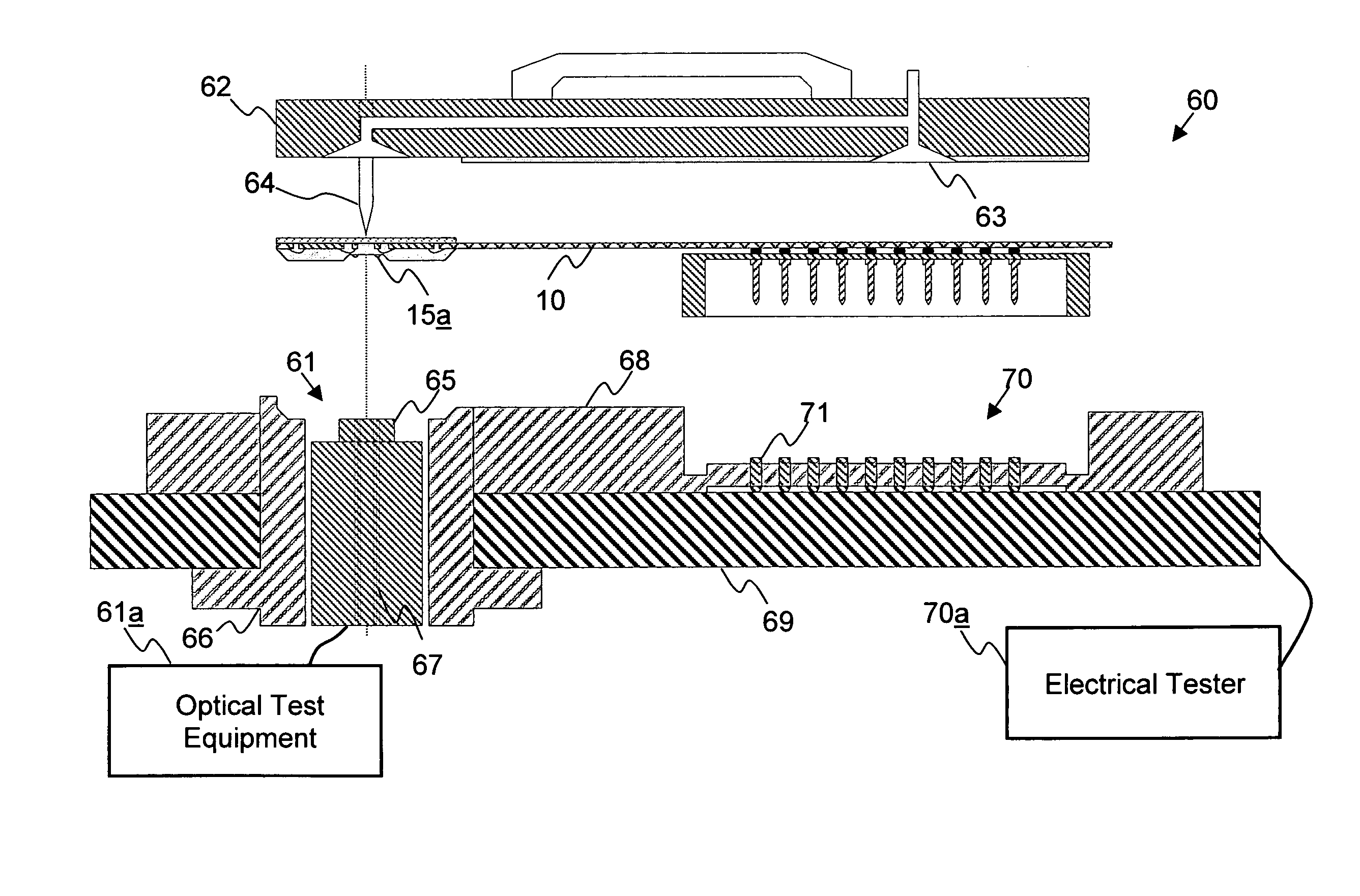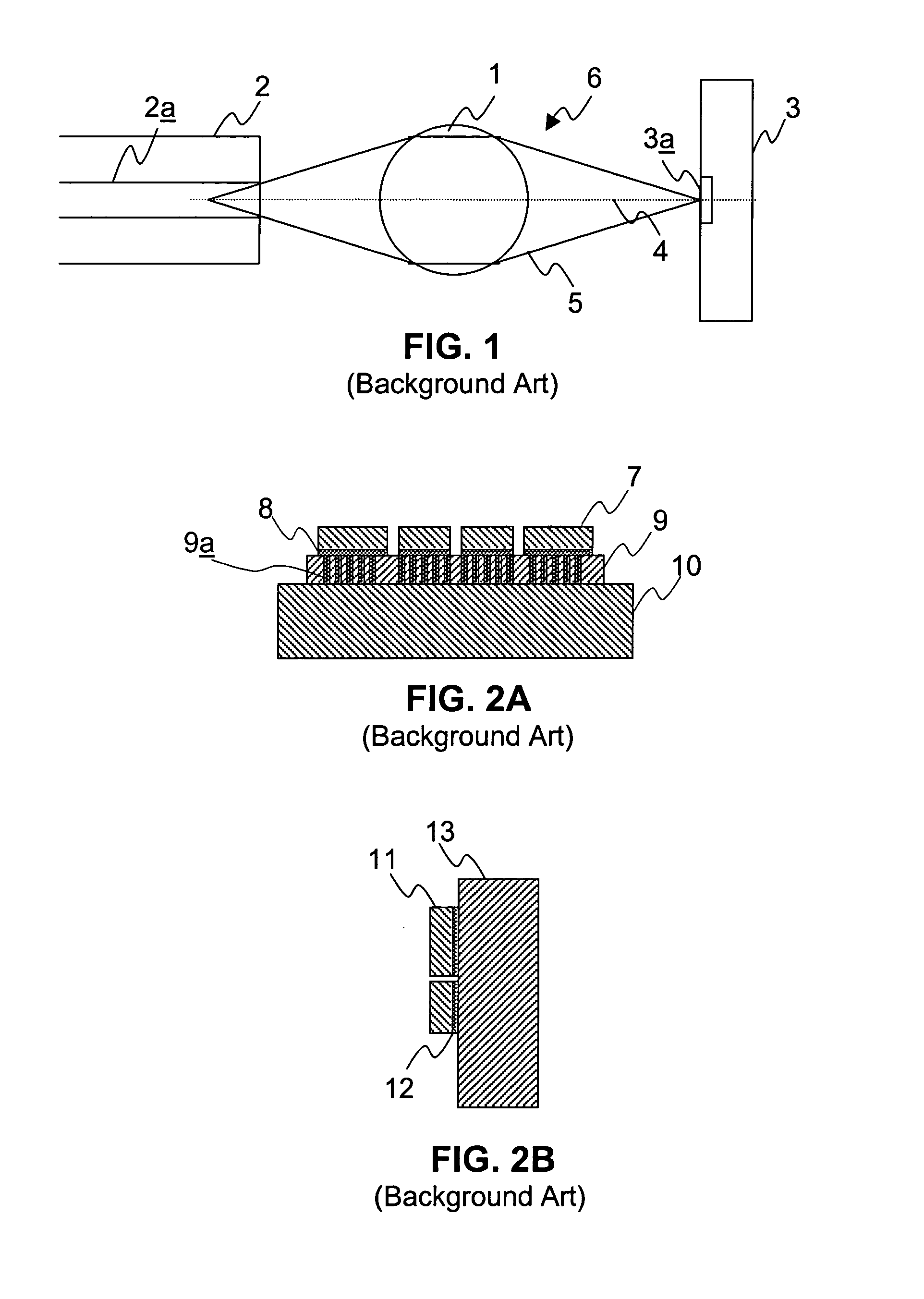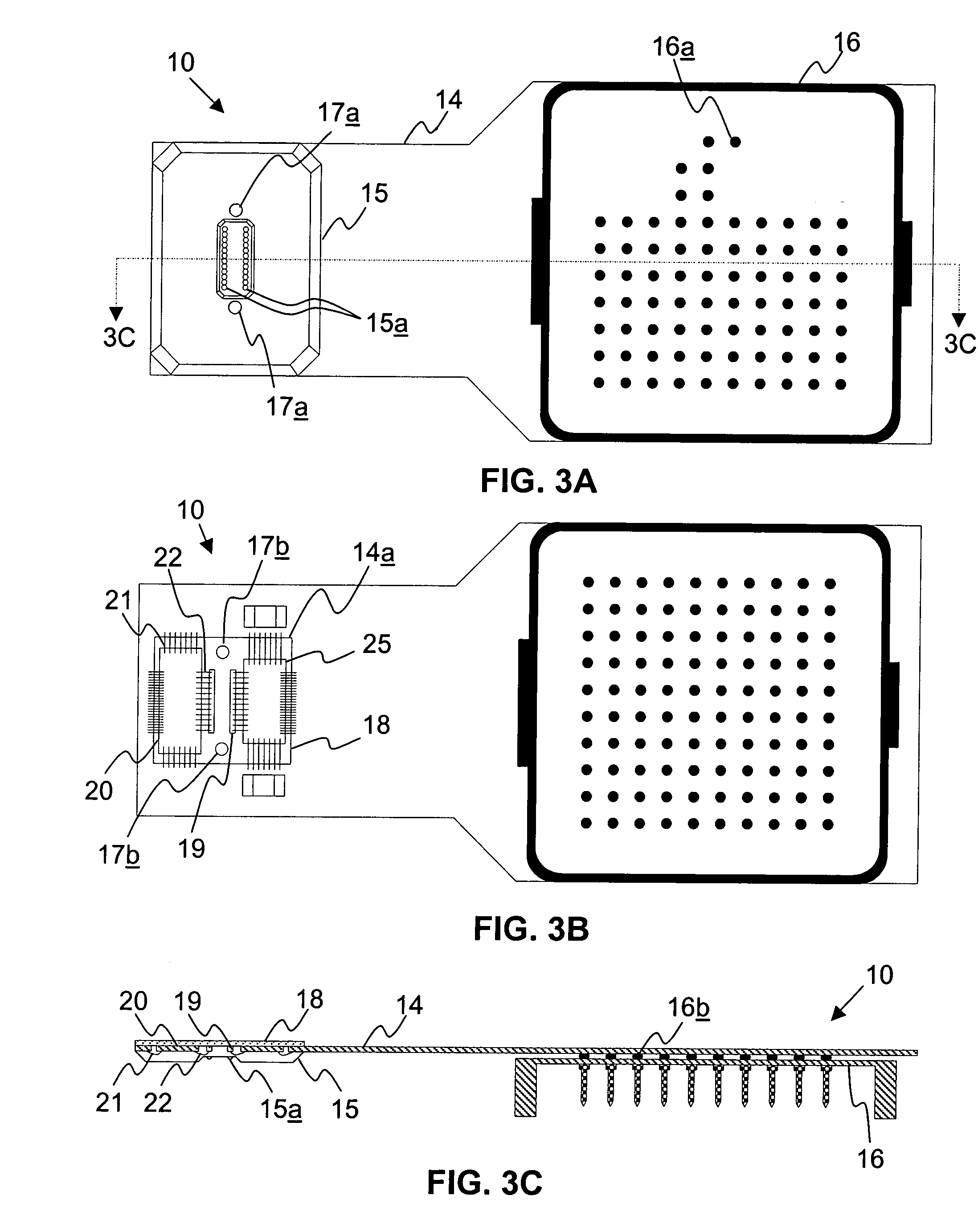Methods of improving reliability of an electro-optical module
a technology of electrooptical modules and reliability, applied in the direction of optical elements, instruments, optical waveguide light guides, etc., can solve the problems of low cost to many thousands of dollars per, difficult alignment of optical fibers to active optical areas of light emitters or light detectors, and the deformation or malfunction of emitters, so as to achieve the effect of improving reliability
- Summary
- Abstract
- Description
- Claims
- Application Information
AI Technical Summary
Benefits of technology
Problems solved by technology
Method used
Image
Examples
Embodiment Construction
[0046]The present inventive principles will be described more fully hereinafter with reference to preferred embodiments thereof. It should be noted, however, that the embodiments disclosed herein are provided by way of example, and not by way of limitation, and may be modified in form and detail without departing from the principles and scope of the inventive concepts.
[0047]A low cost optical module and a process for manufacturing the optical module are disclosed. According to a preferred embodiment, a parallel optical module uses surface emitting light sources (such as LEDs and VCSELs) and includes many fibers (e.g., 24 fibers) in a fiber-ribbon interface. The inventive principles herein can also be applied, however, to modules having other light sources and to those having single or dual fiber connections of individual fibers. The inventive principles herein further apply to transceivers, transponders, receive and transmit, and other types of optical modules.
[0048]According to the...
PUM
 Login to View More
Login to View More Abstract
Description
Claims
Application Information
 Login to View More
Login to View More - Generate Ideas
- Intellectual Property
- Life Sciences
- Materials
- Tech Scout
- Unparalleled Data Quality
- Higher Quality Content
- 60% Fewer Hallucinations
Browse by: Latest US Patents, China's latest patents, Technical Efficacy Thesaurus, Application Domain, Technology Topic, Popular Technical Reports.
© 2025 PatSnap. All rights reserved.Legal|Privacy policy|Modern Slavery Act Transparency Statement|Sitemap|About US| Contact US: help@patsnap.com



